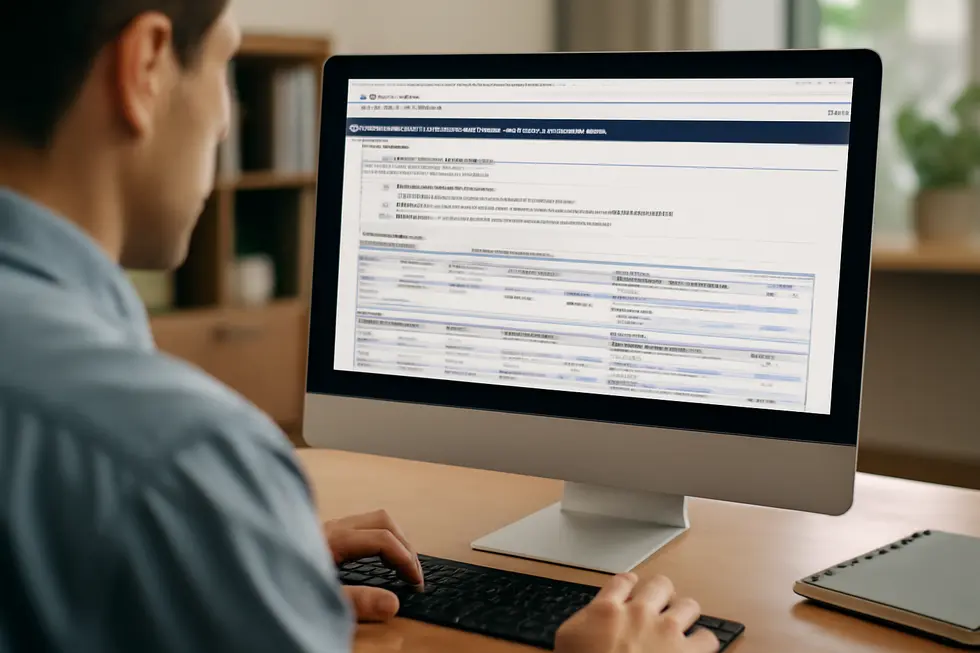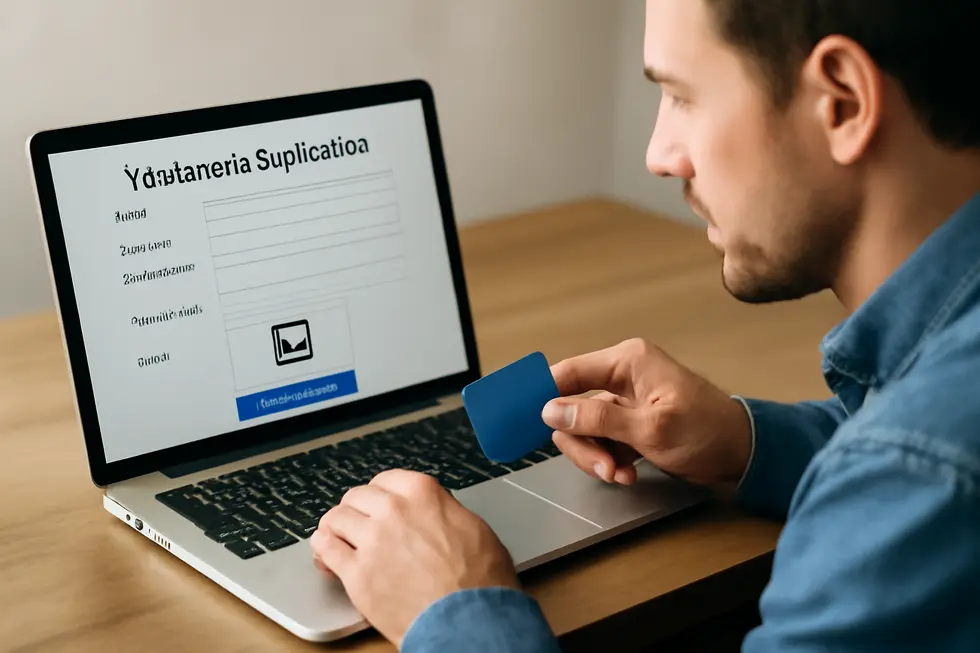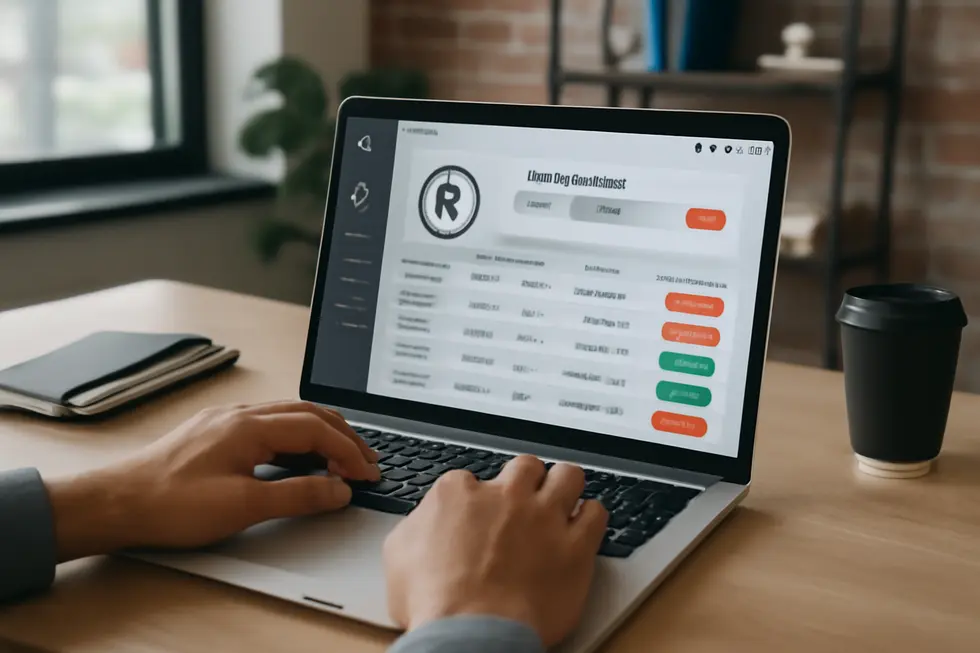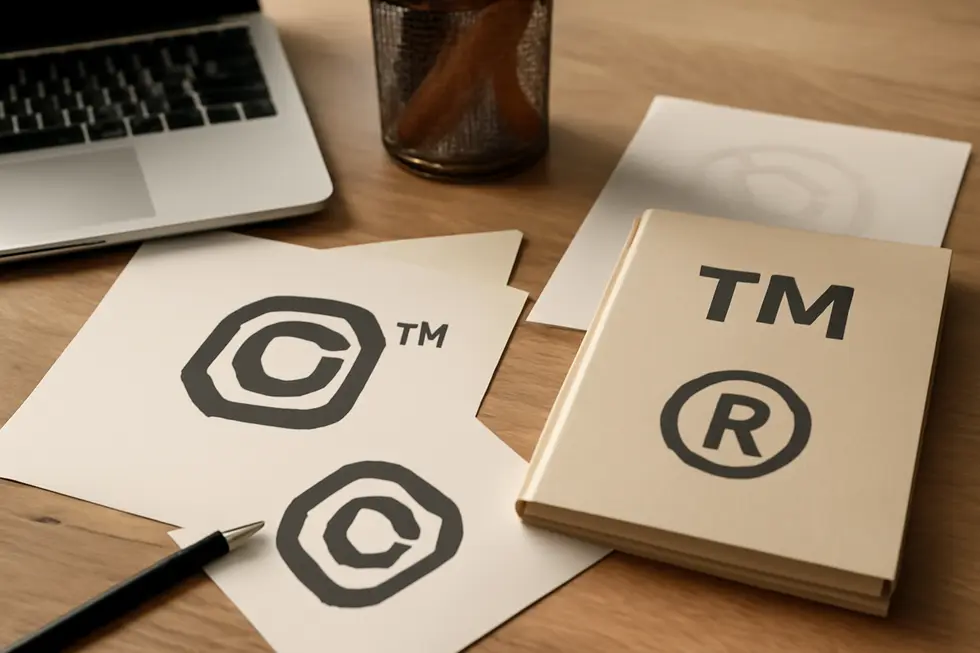Introduction
A strong logo is a powerful asset that distinguishes your business in the marketplace. Securing a trademark for your logo not only protects your brand identity but also helps prevent unauthorized use by competitors. Understanding the trademarking process empowers business owners to safeguard their investments and build lasting brand recognition. This guide breaks down the trademark journey into six essential chapters: starting with how to conduct a comprehensive trademark search to avoid conflicts, preparing an accurate and detailed application, and filing it through the USPTO. It then covers how to monitor your application, respond to inquiries, and use trademark symbols correctly during the process. Finally, it highlights the value of professional guidance to navigate legal complexities. Each chapter builds upon the previous one, offering a cohesive strategy for successfully trademarking your logo and securing your brand’s future.
Tables of Contents
Chapter 1: How to Get a Logo Trademarked: Conducting a Comprehensive Trademark Search
- Mastering Comprehensive Trademark Searches to Protect Your Logo’s Uniqueness
- Mastering USPTO’s Trademark Electronic Search System: A Crucial Step in Logo Trademarking
- Decoding Trademark Design Search Codes to Enhance Logo Trademark Searches
- Balancing Legal Safeguards and Economic Value Through a Thorough Trademark Search
- From Search to Submission: Mastering the Trademark Application Process for Your Logo
Chapter 2: How to Get a Logo Trademarked: Preparing and Describing Your Application Accurately
- Mastering the Art of Trademark Searches to Accurately Prepare Your Logo Application
- Crafting an Accurate and Detailed Logo Description to Strengthen Your Trademark Application
- Mastering Trademark Classes: Accurately Defining Goods and Services to Protect Your Logo
- Mastering Precise Logo Description and Filing for a Smooth Trademark Application
- Navigating Office Actions and Securing Long-Term Protection for Your Logo Trademark
Chapter 3: How to Get a Logo Trademarked: Filing Your Trademark Application with USPTO
- Mastering the Trademark Search: Essential Steps Before Filing Your Logo Application
- Mastering the Preparation and Submission of Your USPTO Logo Trademark Application
- Mastering USPTO Office Actions: Timely and Strategic Responses to Secure Your Logo Trademark
- Mastering USPTO Fees and Classification: Essential Steps for Filing Your Logo Trademark
- Sustaining Your Logo’s Legal Strength: Ongoing Maintenance and Vigilant Enforcement of Your USPTO Trademark
Chapter 4: How to Get a Logo Trademarked: Monitoring, Responding, and Managing Application Status
- Tracking Your Trademark Journey: Key Steps to Monitor and Manage Your Logo Application
- Mastering Responses to USPTO Office Actions and Oppositions in Logo Trademarking
- Mastering Online Platforms: Efficiently Tracking and Managing Your Logo Trademark Application
- Mastering Trademark Maintenance: Strategies for Sustaining Registered Logo Protection and Timely Renewals
- Strategic Legal Steps to Enforce and Safeguard Your Logo Trademark
Chapter 5: How to Get a Logo Trademarked: Proper Use of Trademark Symbols Throughout the Process
- Mastering Trademark Searches and Symbol Use to Safeguard Your Logo
- Mastering the Essential Steps to File Your Logo Trademark and Properly Use Trademark Symbols
- Strategic Use of TM and SM Symbols to Protect Your Logo Before Official Registration
- Mastering the ® Symbol: When and How to Use It After Trademark Registration
- Securing Longevity: Maintaining Your Logo Trademark and Correct Trademark Symbol Usage
Chapter 6: How to Get a Logo Trademarked: Navigating Legal Complexities and Considering Professional Assistance
- Demystifying the Trademark Process: Legal Steps and the Importance of Expert Guidance
- Mastering the Art of Trademark Searching: Ensuring Your Logo’s Unique Identity in a Complex Legal Landscape
- Mastering the Trademark Application: Essential Filing Steps, Fees, and Expert Guidance
- Leveraging Expert Guidance to Master Legal Hurdles in Logo Trademarking
- Mastering the Trademark Application Journey: Overcoming Legal Hurdles with Expert Guidance
Chapter 1: How to Get a Logo Trademarked: Conducting a Comprehensive Trademark Search

1. Mastering Comprehensive Trademark Searches to Protect Your Logo’s Uniqueness
A comprehensive trademark search is crucial when trademarking your logo, as it uncovers existing marks that may conflict with yours, preventing rejection or infringement. This involves searching the USPTO’s Trademark Electronic Search System (TESS), state databases, and common law trademarks—those unregistered but in use. Utilizing AI-driven tools enhances accuracy by detecting visual, phonetic, and conceptual similarities often missed manually. Careful classification of your logo’s design elements ensures thorough examination. Conducting this detailed search before filing safeguards your brand’s uniqueness and smooths the registration process. For more insights on trademark protection, see trademark protection for business names and logos.
2. Mastering USPTO’s Trademark Electronic Search System: A Crucial Step in Logo Trademarking
A thorough trademark search using the USPTO’s Trademark Electronic Search System (TESS) is vital before filing your logo application. Begin by accessing TESS and selecting the “Word and/or Design Mark Search (Free Form)” for flexibility. Identify design elements of your logo with the USPTO Design Search Code Manual, then perform an expert search using relevant design codes combined with logical operators to narrow results. Carefully review records and images, consulting the Trademark Official Gazette for missing visuals. Extend your search to state databases for full coverage. These steps minimize conflicts, ensuring your logo stands unique and registrable. For detailed strategies, explore trademark protection for business names and logos.
3. Decoding Trademark Design Search Codes to Enhance Logo Trademark Searches
Understanding and utilizing Trademark Design Search Manual codes empowers applicants to perform targeted logo searches within the USPTO system. These six-digit codes categorize visual elements—such as animals, shapes, or symbols—allowing you to identify existing trademarks with similar design traits. By breaking your logo into components and matching each to the appropriate code, you can enter precise search queries in the USPTO’s Trademark Electronic Search System using field tags like [dc]. Combining multiple codes with Boolean operators refines results further, helping to uncover potential conflicts before filing. This method boosts search accuracy and can prevent costly trademark disputes. For deeper insight, explore resources on trademark protection strategies.
4. Balancing Legal Safeguards and Economic Value Through a Thorough Trademark Search
Conducting a comprehensive trademark search is essential to ensure your logo’s distinctiveness and avoid legal conflicts. This process demands accurate documentation and precise application to meet USPTO standards and reduce rejection risks. Economically, it helps prevent costly disputes, with filing fees starting around $250-$350 per class and additional legal expenses. Successful registration grants stronger protection and exclusive use rights, enhancing your brand’s market position. For deeper insights, explore trademark protection strategies in detail at trademark2go.com/company-trademarks-logos.
5. From Search to Submission: Mastering the Trademark Application Process for Your Logo
After completing a thorough trademark search, the critical next phase is preparing and submitting your application precisely to the USPTO. Accurately describe your logo’s design, classify the goods or services it represents, and choose the appropriate application type. Filing the application online involves paying fees and retaining confirmation records. The USPTO examination may request clarifications, so timely responses are essential. Engaging legal expertise can enhance your application’s success and ensure proactive monitoring. This diligent, step-by-step method helps secure your logo’s trademark protection effectively. For deeper insights, explore practical guidance on navigating the trademark application process.
Chapter 2: How to Get a Logo Trademarked: Preparing and Describing Your Application Accurately

1. Mastering the Art of Trademark Searches to Accurately Prepare Your Logo Application
Before filing your trademark application, conducting a thorough search is essential to avoid conflicts and rejection. Utilize the USPTO’s Trademark Electronic Search System (TESS) to find existing logos or similar marks. Apply design search codes from the Trademark Design Code Search Manual to capture visual similarities. Include phonetic and variant spellings in your search, and consider industry-specific or international databases. Precision in describing the goods or services your logo represents using correct classifications ensures your mark is properly protected and recognized. Engaging professional help can streamline this process and improve accuracy. For further reading on trademark protection for logos, visit our detailed guide on company trademarks and logos.
2. Crafting an Accurate and Detailed Logo Description to Strengthen Your Trademark Application
A precise logo description is crucial for a successful trademark application. Detail every visual element, including shapes, unique design features, and colors you claim. Specify any integrated text or slogans exactly as they appear, and describe how the logo is used commercially. Additionally, clearly identify the goods or services your logo represents using the USPTO’s Nice Classification system. This comprehensive narrative helps avoid ambiguities and supports your logo’s distinctiveness. Engaging a trademark expert can ensure your description aligns with USPTO standards, increasing approval chances. For more insights, explore detailed guidance on trademark protection for logos.
3. Mastering Trademark Classes: Accurately Defining Goods and Services to Protect Your Logo
Choosing the correct trademark classification is vital for effective logo protection. The Nice Classification system divides goods and services into 45 classes, distinguishing between tangible products and services. Precisely identify your core offerings—such as clothing under Class 25 or software under Class 9—and select all relevant classes that cover your current and future business scope. Use clear, accepted terms for descriptions to avoid vagueness, and prepare specimens showing your logo applied in those categories. This accuracy ensures comprehensive protection and smoother application processing. For more insight, see detailed trademark protection guidance.
4. Mastering Precise Logo Description and Filing for a Smooth Trademark Application
Filing a logo trademark application requires meticulous attention to detail and consistency. You must provide your exact legal name, contact information, and a high-quality image of your logo showcasing every design element and color to be protected. Clearly defining the goods or services your logo represents using the Nice Classification ensures correct categorization. Consistent spelling and formatting throughout the application minimize risks of delay or rejection. Prepare to respond promptly to office actions to maintain momentum. Professional guidance can enhance accuracy and improve approval chances. For comprehensive insights on trademark protection for logos, see trademark protection for business name and logo.
5. Navigating Office Actions and Securing Long-Term Protection for Your Logo Trademark
Responding promptly to office actions is essential when trademarking your logo. Carefully review examiner concerns, which often focus on logo description clarity, image quality, or conflicts with existing marks. Provide clear, persuasive responses by addressing issues or explaining your logo’s distinctiveness. Post-approval, maintain your trademark by monitoring infringements and filing timely renewals to avoid cancellation. Employing professional assistance enhances success and ensures consistent upkeep, vital for securing long-term legal rights. For guidance on sustaining your trademark, the trademark protection for business name and logo resource offers valuable insights.
Chapter 3: How to Get a Logo Trademarked: Filing Your Trademark Application with USPTO

1. Mastering the Trademark Search: Essential Steps Before Filing Your Logo Application
Conducting a thorough trademark search is critical before filing your logo application with the USPTO. Start by using the USPTO’s Trademark Electronic Search System (TESS) to identify exact and similar marks. Expand your search to variant spellings and use design codes from the Trademark Design Search Manual to detect similar logo elements. Also, explore state trademarks, business names, and common law trademarks outside federal registries. For global use, consult international databases. Professional guidance can help interpret results and avoid conflicts that could jeopardize registration. This proactive approach ensures a smoother application process and stronger trademark protection. For more insights on trademark protection, see trademark protection for business name & logo.
2. Mastering the Preparation and Submission of Your USPTO Logo Trademark Application
Successfully trademarking your logo begins with thorough preparation and precise application submission through the USPTO. Start by gathering a clear image of your logo and detailed descriptions of the goods or services it represents. Choose your filing basis—actual use or intent to use—which affects fees and process timeline. Submit your application online via the USPTO’s TEAS system, ensuring all information matches and fees are paid. After filing, monitor your application status closely and respond promptly to any USPTO inquiries. For guidance tailored to business trademark protection, consider exploring resources on trademark safeguards.
3. Mastering USPTO Office Actions: Timely and Strategic Responses to Secure Your Logo Trademark
When you receive an Office Action from the USPTO during your logo trademark application, prompt and precise responses are essential. Since December 2022, the USPTO requires applicants to reply within three months or request an extension with a fee to avoid abandonment. Responses must address all USPTO objections, often involving legal arguments to prove your logo’s distinctiveness or resolve conflicts with prior marks. Engaging a trademark professional can ensure a strategic reply, transforming Office Actions into opportunities to strengthen your application. Staying vigilant during this phase maximizes your chance of a successful trademark registration. For deeper insights on protecting your logo, consider exploring trademark protection for your business name and logo.
4. Mastering USPTO Fees and Classification: Essential Steps for Filing Your Logo Trademark
Filing a logo trademark with the USPTO requires understanding both the fee structure and the classification of goods or services. As of January 2025, each class you file under costs a flat $350, with an additional $200 surcharge if you use custom descriptions instead of standard ones from the USPTO ID Manual. Accurately selecting the correct classes according to the Nice Classification system is crucial, as fees are charged per class and misclassification can delay your application. Keeping your application details handy ensures smooth tracking and response to USPTO communications. For more insights on protecting your brand identity, explore foundational concepts on trademark protection for business names and logos.
5. Sustaining Your Logo’s Legal Strength: Ongoing Maintenance and Vigilant Enforcement of Your USPTO Trademark
Maintaining your registered logo trademark requires timely filings, including the Section 8 Declaration of Continued Use between years 5 and 6, and the Section 9 renewal every 10 years. Keeping detailed records of your logo’s use in commerce solidifies your claim and prevents abandonment. If licensing your mark, strict quality control ensures your brand’s integrity. Actively monitoring for unauthorized use and enforcing your rights safeguards your trademark’s value. Missing maintenance deadlines or neglecting enforcement risks losing exclusive protection. For guidance on sustaining your mark’s power, consult resources on trademark protection for business names and logos.
Chapter 4: How to Get a Logo Trademarked: Monitoring, Responding, and Managing Application Status

1. Tracking Your Trademark Journey: Key Steps to Monitor and Manage Your Logo Application
Successfully trademarking your logo requires diligent monitoring and timely responses after application submission. Begin by regularly checking your application’s status through the USPTO’s online portal to stay informed about updates or office actions. Address any USPTO inquiries or objections promptly to avoid delays or rejection. For international trademarks, the WIPO eMadrid system provides a centralized way to track registration progress. Throughout this process, maintaining thorough documentation and considering legal assistance greatly aids in navigating complexities and protecting your brand rights effectively. Learn more about protecting trademarks and logos by exploring company trademark basics.
2. Mastering Responses to USPTO Office Actions and Oppositions in Logo Trademarking
Successfully trademarking a logo demands more than filing; it requires attentive monitoring and strategic responses to office actions and oppositions. When the USPTO issues an office action, carefully review the examiner’s concerns, which often involve clarifying design elements or addressing potential conflicts. Respond promptly with clear arguments or amendments to maintain your application’s momentum. If an opposition arises during the publication phase, analyze the challenger’s claims, focusing on distinctiveness and likelihood of confusion. A thorough understanding and timely, reasoned responses increase your chances of defending your trademark effectively. Engaging legal expertise can help navigate complexities and safeguard your brand’s identity. For further insights, explore detailed guidance on trademark protection for logos.
3. Mastering Online Platforms: Efficiently Tracking and Managing Your Logo Trademark Application
Filing your logo trademark through the USPTO’s online system initiates a digital process that allows real-time application monitoring. By creating a MyUSPTO account, you gain access to instant updates on examination progress, office actions, and publication status. Promptly responding to any examiner queries via this platform prevents delays and rejection. For international trademarks, platforms like WIPO’s eMadrid streamline global status tracking and renewals. Leveraging these digital tools ensures efficient management of your trademark journey while maintaining your legal rights. For additional support, consider professional guidance specializing in trademark protection.
4. Mastering Trademark Maintenance: Strategies for Sustaining Registered Logo Protection and Timely Renewals
Successfully managing your registered logo trademark demands diligent upkeep of legal rights through proper documentation, enforcement, and renewal. Keep detailed records proving the logo’s ongoing commercial use, which is essential for renewal filings and defending against infringement. Trademark registrations last typically ten years and require timely renewal applications, often accompanied by declarations verifying active use. Proactively monitoring the marketplace and addressing unauthorized uses preserves your mark’s distinctiveness. Navigating these responsibilities with specialized legal guidance enhances protection, ensuring your logo remains a valuable brand asset. For additional trademark enforcement advice, explore comprehensive resources on trademark protection for business names and logos.
5. Strategic Legal Steps to Enforce and Safeguard Your Logo Trademark
Securing a logo trademark requires more than filing an application; it demands ongoing strategic vigilance. Begin with a thorough trademark search to avoid conflicts. Once filed, respond swiftly to USPTO office actions to clear objections. After publication, monitor for oppositions or unauthorized uses to enforce your rights effectively. Trademark protection applies only within registered classes, so understanding and selecting correct classifications is essential. Maintaining your trademark through renewals and active legal defense prevents infringement and strengthens your brand’s distinctiveness. Collaborating with a trademark attorney can simplify navigating complex enforcement and global protection strategies. For practical insights on protecting your brand identity, see trademark protection for business names and logos.
Chapter 5: How to Get a Logo Trademarked: Proper Use of Trademark Symbols Throughout the Process

1. Mastering Trademark Searches and Symbol Use to Safeguard Your Logo
Conducting a thorough trademark search is crucial to securing your logo’s protection. Utilize USPTO tools like the Trademark Electronic Search System (TESS) and the Trademark Design Search Manual to identify any identical or confusingly similar logos, covering variant spellings and design elements. This step prevents application conflicts. Throughout the trademarking process, use the ™ symbol to claim your rights before registration and switch to the ® symbol only after official approval. Proper symbol use notifies others of your legal rights and strengthens protection while avoiding penalties. For more on trademark protections, explore trademark protection for business names and logos.
2. Mastering the Essential Steps to File Your Logo Trademark and Properly Use Trademark Symbols
Successfully filing a logo trademark hinges on thorough preparation and accurate application. Begin by conducting a comprehensive trademark search using tools like the USPTO’s TESS to ensure your logo’s uniqueness. Carefully describe your logo’s design elements and specify related goods or services using established classification systems. File your application electronically, upload your logo image, and pay the necessary fees. Throughout the review, address any requests promptly. Use the ™ symbol while your application is pending to assert your claim, switching to ® only once registration is granted. This disciplined process not only helps secure exclusive rights but also signals your brand’s legitimacy and legal protection. For deeper insights, explore detailed trademark guidance at trademark2go.com/company-trademarks-logos.
3. Strategic Use of TM and SM Symbols to Protect Your Logo Before Official Registration
Before your logo is officially registered, using the TM (™) symbol for goods and the SM (℠) symbol for services is crucial to assert your trademark rights publicly. These symbols indicate your claim without formal registration and alert others to respect your branding. It is important to never use the ® symbol prior to registration, as doing so can result in legal penalties. Proper use of TM and SM during this stage maintains your brand’s identity while preparing for full protection. For more insights on trademark rights, explore common law trademark protections.
4. Mastering the ® Symbol: When and How to Use It After Trademark Registration
The ® symbol is reserved exclusively for use after your logo earns official registration from the USPTO or the pertinent authority. Using ® prematurely is not only improper but also illegal, subjecting you to penalties. Before registration, the ™ symbol (for goods) and ℠ symbol (for services) communicate your claim without implying formal approval. Once registered, the ® symbol signals your logo’s federally protected status, strengthening your legal defense and notifying the public. Place these symbols at the upper right of your mark to clearly assert your rights and comply with trademark standards. Proper symbol use throughout your trademark journey safeguards your brand and enhances legal standing. For further insights on trademark protection and logo rights, explore the guidance on company trademarks and logos.
5. Securing Longevity: Maintaining Your Logo Trademark and Correct Trademark Symbol Usage
Securing your logo trademark’s long-term protection requires diligent maintenance, including timely filings like the Section 8 Declaration between years five and six, and the ten-year renewal under Section 9. Consistent commercial use and detailed records strengthen your rights, while careful licensing with quality control prevents dilution. Throughout the process, use the ™ symbol before registration to assert rights, switching to ® only post-registration to communicate federal protection clearly. Managing deadlines and fees thoughtfully preserves your logo’s enforceability and brand identity. For more insights, explore trademark protection business name logo.
Chapter 6: How to Get a Logo Trademarked: Navigating Legal Complexities and Considering Professional Assistance

1. Demystifying the Trademark Process: Legal Steps and the Importance of Expert Guidance
Trademarking a logo requires navigating a detailed legal process, starting with selecting a distinctive mark and conducting thorough searches to avoid conflicts. Filing an accurate application with the USPTO or relevant office involves precise details and correct classification. The application undergoes examination and public opposition periods before registration. Common pitfalls, like incomplete searches or errors, can cause delays or rejection. Because of these complexities, professional legal assistance is highly recommended to ensure a smooth process, respond effectively to objections, and secure robust protection. For more insights on trademark protection, see the comprehensive guide to trademark protection for business names and logos.
2. Mastering the Art of Trademark Searching: Ensuring Your Logo’s Unique Identity in a Complex Legal Landscape
A thorough trademark search is essential to safeguard your logo’s uniqueness before filing. This process extends beyond identical matches to include similar designs and variant spellings that may cause confusion. Utilizing tools like the USPTO Trademark Electronic Search System (TESS) alongside the Design Search Code Manual enhances detection of visual similarities. Expanding your search to state, common law, and international databases reduces future legal challenges. While AI tools can speed searches, expert analysis from a trademark attorney ensures nuanced interpretation and protects your brand strategically. For more insights, consult resources on trademark protection for business names and logos.
3. Mastering the Trademark Application: Essential Filing Steps, Fees, and Expert Guidance
Filing a logo trademark application with the USPTO requires electronic submission via the TEAS system, accompanied by a base fee between $250 and $350 per class of goods or services. Accurate descriptions of your logo and proper classification under the Nice system are crucial to avoid delays or rejection. The process typically spans 6 to 12 months, during which you must promptly address any USPTO queries. Engaging trademark professionals can significantly improve the application’s precision, reducing costly errors and expediting approval. For comprehensive details, consult trusted sources on trademark protection business name logo.
4. Leveraging Expert Guidance to Master Legal Hurdles in Logo Trademarking
Navigating the trademarking process for your logo involves complex legal steps, from thorough searches to responding to USPTO inquiries. Professional assistance, such as trademark attorneys or specialized services, ensures accurate classification, proper application filing, and timely handling of office actions. Their expertise reduces risks of rejection and infringement disputes, safeguarding your brand’s identity. Moreover, they provide ongoing monitoring and enforcement support essential for long-term protection. Engaging professionals significantly smooths the journey and strengthens your trademark’s legal standing. For further insights, explore detailed trademark protection guidance tailored for businesses.
5. Mastering the Trademark Application Journey: Overcoming Legal Hurdles with Expert Guidance
Successfully managing your logo trademark application demands precise preparation, strategic filing, and vigilant follow-up. After verifying your logo’s uniqueness, a clear, detailed application must delineate the logo’s design and its relevant goods or services categories. Filing electronically with the trademark office accelerates processing but requires thorough understanding of legal nuances. Addressing office actions promptly and accurately is crucial to avoid delays. Legal complexities, such as potential oppositions or infringement claims, often arise and necessitate expert guidance. Enlisting a trademark attorney enhances your chances of approval and secures robust protection for your brand identity. For more insights, consider exploring detailed trademark protection strategies for business names and logos.
Final thoughts
Trademarking a logo is a pivotal step for business owners aiming to protect their brand identity and maintain exclusive rights to their unique mark. The process demands a thorough trademark search to avoid conflicts, a carefully prepared and detailed application, timely filing through the USPTO, and vigilant monitoring for any requests or objections. Proper use of trademark symbols communicates your rights clearly to the public throughout the journey. While the procedure can feel complex, leveraging professional legal assistance can streamline the process and improve your chances of success. By following these carefully structured steps, business owners can secure their logos as valuable intellectual property assets, reinforcing their brand’s competitive edge and market trust for years to come.
Your IP is the foundation of your success – let’s protect it together before it’s too late. We can’t wait to help you turn your ideas into legally secured assets.
About us
undefined


